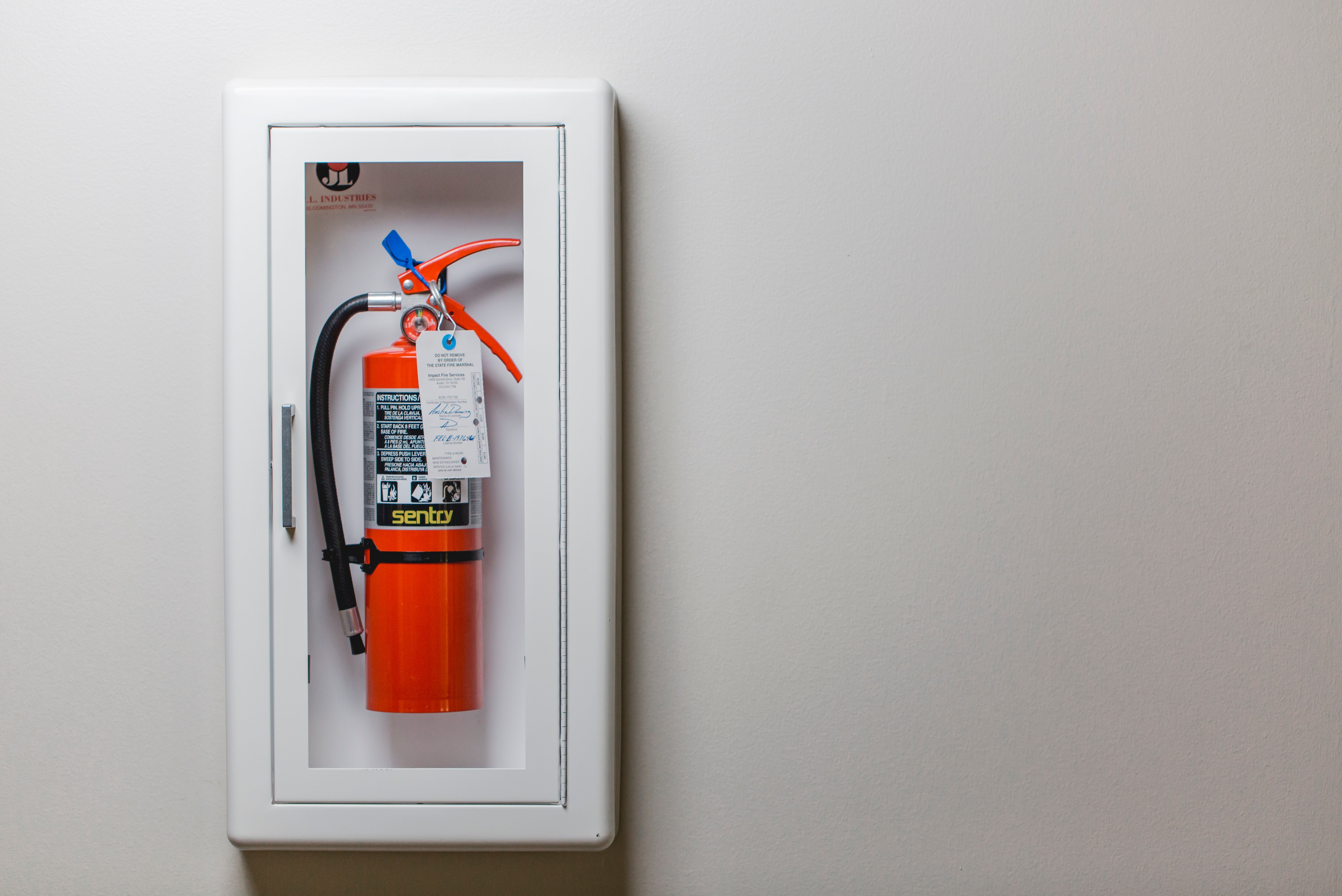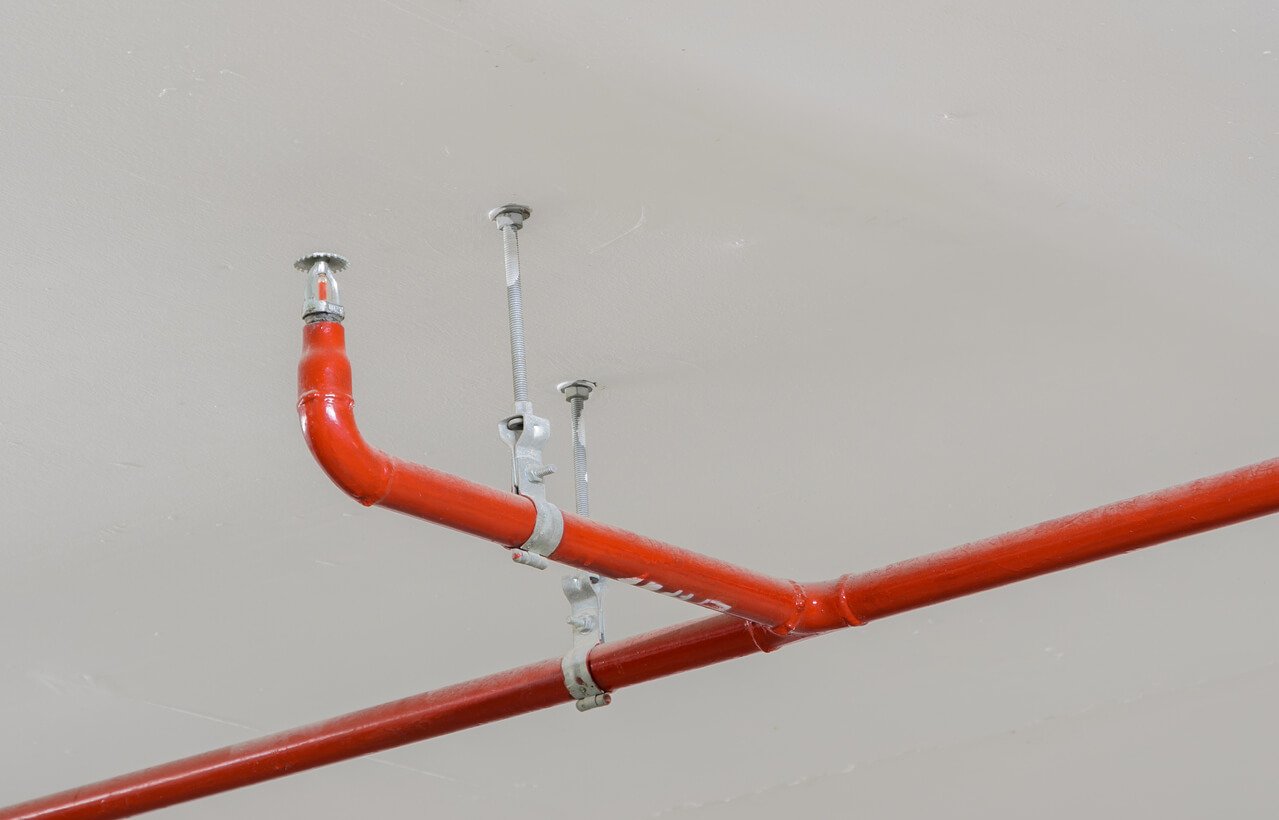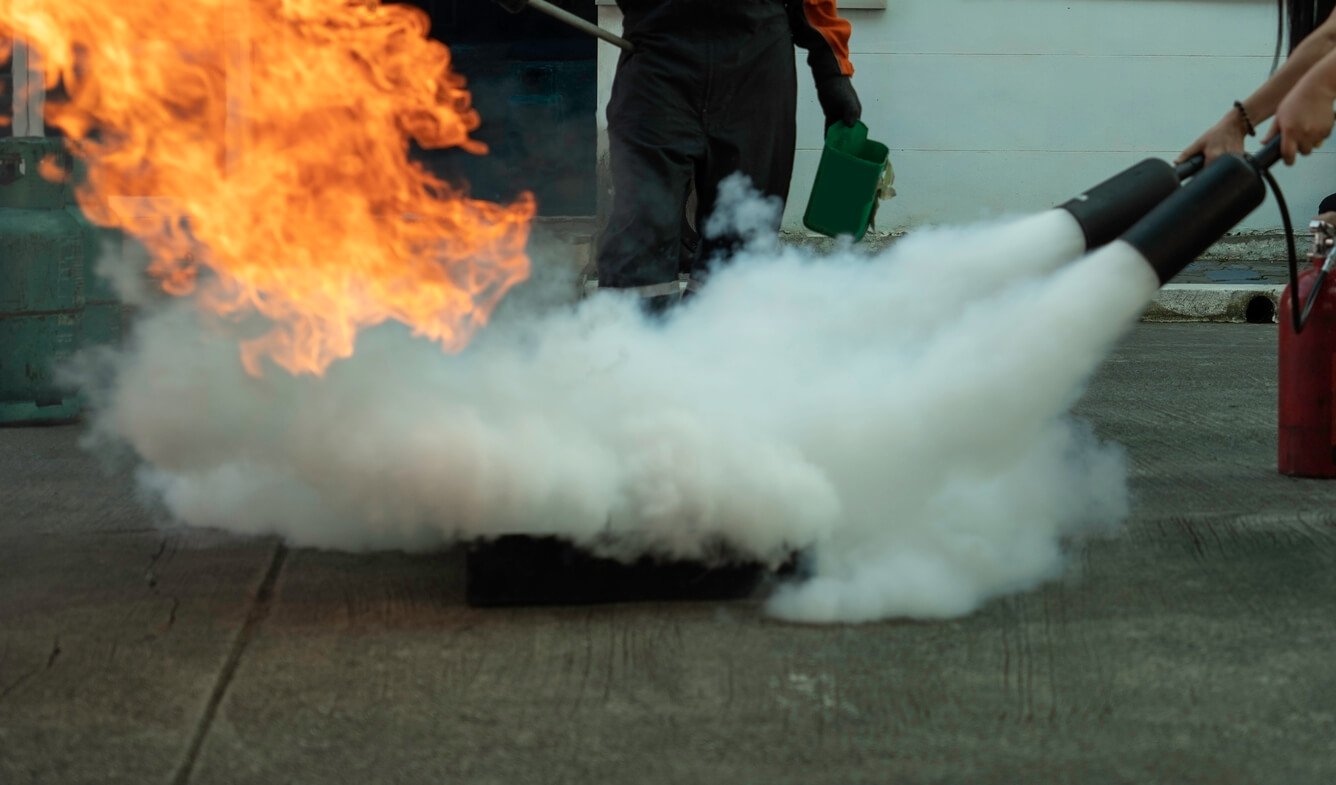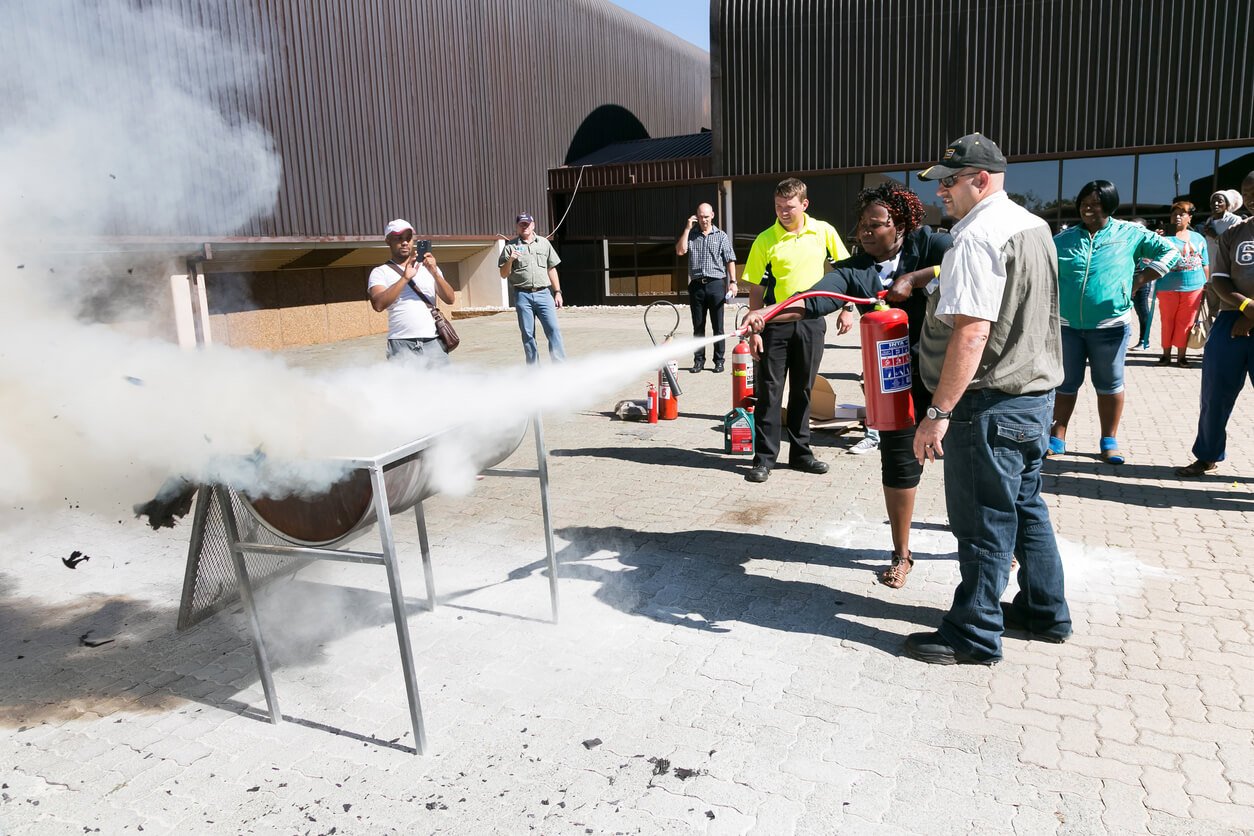30 seconds.
That’s all it takes to determine whether a fire becomes a minor incident—or a major disaster—in your building.
It makes sense, then, that understanding how to use a fire extinguisher is so important for overall safety and damage control.
In fact, 94% of the time a portable fire extinguisher is used, it puts out the fire, typically within the initial two minutes.
So, how do you use a fire extinguisher?
We’ll break it down step by step.
Key Takeaways
- A small fire can become a major incident in just 30 seconds, making immediate response with portable fire extinguishers your most critical line of defense before fire department arrival.
- The systematic Pull-Aim-Squeeze-Sweep (PAAS) method works across all extinguisher types when properly applied - always aim at the fire's base, not the flames, for maximum effectiveness.
- Activate fire alarms, announce the emergency, assess fire size, ensure clear exits, and evaluate personal capability before attempting any fire suppression efforts.
- NFPA-mandated monthly visual inspections and annual professional maintenance ensure fire extinguishers remain ready when emergencies strike - a failed extinguisher is worse than no extinguisher.
- Regular hands-on training with actual building extinguishers creates the muscle memory and confidence necessary for effective emergency response when every second counts.
What to Do Before Reaching for Any Fire Extinguisher
Before anyone touches a fire extinguisher, several life-saving steps must occur.
Activate Your Fire Alarm System
The moment someone spots smoke or flames, activating the building's fire alarm system takes priority. This action serves multiple purposes: it alerts all occupants to evacuate immediately, notifies the fire department through central station monitoring, and creates an official record of the emergency.
Announce the Emergency
Verbal announcements complement fire alarm systems, particularly in buildings where occupants may not immediately hear alarms or understand their significance. Loudly announce "Fire! Everyone out!" to ensure all building occupants understand the urgency. This step becomes especially critical in buildings housing elderly residents, individuals with hearing impairments, or those who may be sleeping.
Quickly Assess Fire Size and Spread
Only attempt to fight a fire if it remains small and contained. Use a fire extinguisher when all of these questions are answered "yes." If you're unsure about whether it is safe to use a fire extinguisher, and for all other situations, alert others, leave the building, and call 911. A fire suitable for extinguisher use should be no larger than a wastebasket and confined to a single object or surface.
Ensure Clear Exit Routes
Before approaching any fire with a portable fire extinguisher, verify that a clear exit path remains available at all times. Position yourself between the fire and the exit, never allowing the fire to block your escape route. This positioning prevents becoming trapped if the extinguisher fails to control the flames or if the fire spreads unexpectedly.
Evaluate Personal Capability
Young children and older adults should not use fire extinguishers. Additionally, individuals with mobility limitations, respiratory conditions, or those unfamiliar with fire extinguisher operation should prioritize evacuation over firefighting attempts. Physical capability and training directly impact the success of fire suppression efforts.
Step-by-Step Fire Extinguisher Operation With The P.A.S.S Method
The P.A.S.S. method provides a systematic approach to fire extinguisher operation that works across all extinguisher types.
This four-step process—Pull, Aim, Squeeze, Sweep—creates muscle memory that proves invaluable during high-stress emergency situations.
Step 1: Pull the Pin
The first step involves pulling the safety pin located at the top of the extinguisher.
This pin releases a locking mechanism that prevents accidental discharge during normal handling and storage.
Before pulling the pin, always inspect the tamper seal to ensure the extinguisher hasn't been previously used or tampered with. A broken or missing tamper seal indicates the extinguisher may be partially discharged or compromised.
Some fire extinguishers feature different pin designs, but the principle remains consistent across all types. Hold the extinguisher firmly with one hand while pulling the pin with the other. Keep the extinguisher pointed away from yourself and others during this step to prevent accidental discharge that could cause injury or waste precious extinguishing agent.
Step 2: Aim at the Base
Proper aiming technique is the difference between effective fire suppression and wasted effort. Always aim the extinguisher nozzle at the base of the fire, not at the flames themselves. This strategy targets the fire’s fuel source—not just the flames—resulting in more effective suppression and reducing the risk of re-ignition.
Stand several feet away from the fire initially—most fire extinguishers operate effectively at ranges between 6 and 20 feet, depending on the extinguisher type and size.
As the fire subsides, move closer—always keeping your aim at the base. This approach prevents the fire from spreading while maximizing the extinguishing agent's effectiveness.
The nozzle pointing technique varies slightly depending on the portable fire extinguisher type. Dry chemical extinguishers create a wide spray pattern that covers broader areas, while carbon dioxide extinguishers produce a more focused discharge that requires precise aiming. Understanding your specific extinguisher's discharge pattern improves suppression effectiveness.
Step 3: Squeeze the Handle
Squeeze the operating lever slowly and deliberately to release the extinguishing agent. This controlled approach allows for better aim adjustment and prevents wasting the limited extinguishing agent through rapid discharge.
Most fire extinguishers provide only 10 to 15 seconds of extinguishing power when fully charged, making controlled discharge essential for successful suppression.
The squeeze technique differs among extinguisher types. Traditional stored-pressure extinguishers require steady pressure on the lever to maintain discharge, while some specialized extinguishers use different activation methods. If you release the handle during operation, the discharge stops immediately, allowing for strategic pauses to reassess the fire's status or adjust your position.
Monitor the pressure gauge throughout the discharge process if your extinguisher is equipped with one. The gauge indicates remaining extinguishing agent and helps determine when the extinguisher is nearly empty. This information proves critical for deciding whether to continue suppression efforts or evacuate immediately.
Step 4: Sweep Side to Side
Use a sweeping motion to move the extinguisher discharge from side to side across the fire's base until the flames are completely extinguished.
This technique ensures comprehensive coverage and prevents the fire from reigniting in areas that received insufficient extinguishing agent. The sweeping motion should be slow and deliberate, allowing the extinguishing agent to penetrate burning materials effectively.
Continue the sweeping motion even after visible flames disappear. Many fires continue smoldering beneath the surface, particularly Class A fires involving wood, paper, or fabric materials.
A couple of key safety considerations to remember:
- Always maintain a clear escape route behind you during fire extinguisher operation.
- Watch for re-ignition after successful suppression.
- Be prepared for different post-discharge conditions depending on the fire type and subsequent extinguisher used (e.g., dry chemical extinguishers leave powder residue).
It’s also important to consider environmental factors that affect extinguisher performance. Wind can disperse extinguishing agents, reducing effectiveness and potentially spreading burning materials. Indoor fires may create smoke conditions that obscure visibility and complicate proper aiming. Adjust your technique accordingly while maintaining safety priorities.
Additional Safety Protocols for Fire Extinguishers
Fire extinguisher effectiveness depends not only on proper operation but also on rigorous maintenance schedules and safety protocols.
Building owners bear legal responsibility for ensuring fire extinguishers remain operational. This requires a clear understanding of inspection, maintenance, and compliance standards.
Be sure to:
Conduct Monthly Visual Inspections
The National Fire Protection Association (NFPA) mandates monthly visual inspections of all fire extinguishers to ensure they remain ready for emergency use. These inspections can be performed by designated building staff and require verification of several critical elements, including:
- Location and accessibility
- Locking pin
- Tamper seal
- Pressure gauge
- Obvious physical damage (dents, corrosion, leakage, or clogged nozzles)
Get Annual Professional Fire Extinguisher Maintenance
OSHA General Industry Standard 1910.157(e)(3) requires annual maintenance checks performed by certified fire extinguisher technicians. These comprehensive inspections go beyond visual checks to evaluate mechanical components, pressure systems, and overall extinguisher integrity.
Professional inspections also include verification of proper extinguisher classification and placement according to building hazard assessments. Technicians evaluate whether current extinguisher types match evolving fire risks and recommend upgrades when necessary.
There are additional maintenance and testing requirements at years 6 and 12. Working with a fire safety team helps ensure you stay up to date with all fire extinguisher requirements.
Train Your Team
Regular fire extinguisher training ensures building occupants can respond effectively during emergencies.
Training programs should cover proper fire classification identification, P.A.S.S. method application, and safety protocols for different extinguisher types. Hands-on practice with actual extinguishers builds confidence and muscle memory essential for successful emergency response.
Take Action on Fire Extinguisher Safety
Building owners who prioritize fire extinguisher safety protect more than property—they safeguard lives, ensure business continuity, and demonstrate commitment to occupant welfare.
Don't wait until an emergency reveals gaps in your fire protection system. The fire safety experts at Impact Fire can evaluate your current fire extinguisher placement, provide comprehensive maintenance services, and deliver hands-on training that prepares your building occupants for effective emergency response.
Contact Impact Fire today to schedule a comprehensive fire risk assessment and ensure your building meets all regulatory requirements while providing maximum protection for your people and your building.








